When it comes to Istrian gastronomy, it certainly is unique. It combines Mediterranean ingredients and seasonings with seafood, delicious sauces, and indigenous pasta in order to create a beautiful harmony of all the flavors, aromas, and nuances. But when it comes to one specific ingredient which beautifully presents delicious Istrian cuisine, that certainly is homemade pasta.
Posutice, ravijoli, lazanje, fidelini, makaruni, rigationi, pljukanci, and fuži are just a couple of types of pasta you can find in almost every Istrian restaurant. Today, we are going to prepare homemade fuži – we are going to knead, cut, and cook pasta, as well as prepare a delicious tomato sauce with rosemary and serve it with the mentioned indigenous Istrian pasta. But before we get into cooking, let’s talk more about the history of Istrian cuisine and pasta, as well as the specific characteristics of fuži!
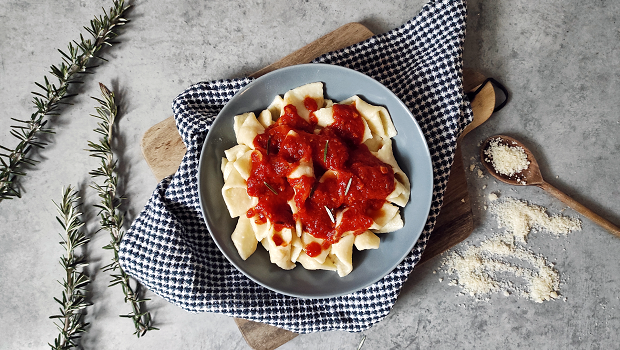

Pasta Through History
The tradition of making and preparing pasta is almost old as time (almost). The pasta was popular in eastern Asia 4,000 years ago, but that still isn’t the oldest track of it – the oldest preserved source or to be exact, the oldest pasta recipe was written on parchment in China and it dates 2,000 years BC. As a dish, pasta was prepared in antiquity too, while the Etruscans drew on relief utensils for making pasta 4 centuries BC. Pasta certainly ages well – today, there are so many types and shapes of pasta that it would be hard to name, make, and taste all of them (is there a challenge we see?) but let’s go one dish at a time!


A dozen types of pasta came from Italy – spaghetti, macaroni, ravioli, reginetta, rigatoni, and more. And there is no question that Italy, as a country of beautiful culture, history, and gastronomy, had an influence on Istrian traditional cuisine. Italians, who moved to Istria in the last centuries, have brought their own traditions that present a part of the basis for Istrian gastronomy. Then, in the combination with Istrian culture and knowledge, its inhabitants created delicious traditional cuisine enriched with flavors, aromas, and nuances.
Today, Istrian cuisine is intertwined with many historic influences, not only Italian, and it combines the best flavors of Mediterranean cuisine and traditional recipes.
Fuži – Homemade Speciality
Pasta fuži got its name after the Latin word fusus which means spindle. This word perfectly describes fuži – they resemble little spindles or flutes so any type of sauce or juice amazingly combines with pasta and creates outstanding flavors.
When it comes to the history of this pasta, its story isn’t that old, it actually dates from the beginning of the 20th century. The story says that nona Luca was trying to make pasutice (small square-looking pasta) but then, out of the blue, the idea came to her mind – why not connect the two opposite ends of the dough? And that’s how and when fuži came to be.
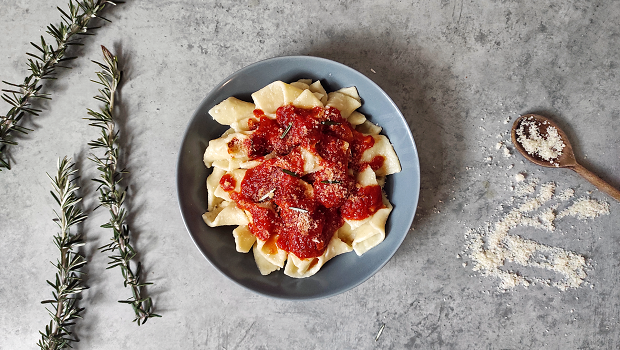

Today, the municipality Kanfanar is known for its production of pasta. The manufacturer Klara Marić is located in Kanfanar and since 1987 it is focused on the production of top-quality pasta while emphasizing the tradition, quality ingredients, and the production method in order to produce amazing homemade pasta.
Tips, Tricks & Variations
As we already mentioned, fuži resemble small flutes or spindles but despite that, they are really easy to make. The most important thing is to roll them out thinly. Once they are cut into little squares, use a ladle to ease up the folding method. Press well the opposite ends of the dough so they don’t fall apart during the cooking. Here is a little trick – put a drop of water on one end and press it over the other one. Water eases up the connecting process.


Fuži can be served with a lot of different ingredients. They are great with any type of seafood, especially prawns and shrimps. In Istria, they are also served with truffles. Truffles are an aromatic ingredient that beautifully combines with any type of pasta, not just fuži.
Today, we are going to prepare fuži with a classic, homemade, and delicious tomato juice and rosemary. Are you ready to knead and cook? Get your apron ready and let’s go!
Put flour in a bigger bowl and make a small hollow in its center, and then add eggs, oil, wine, and a bit of water. Mix all the ingredients.
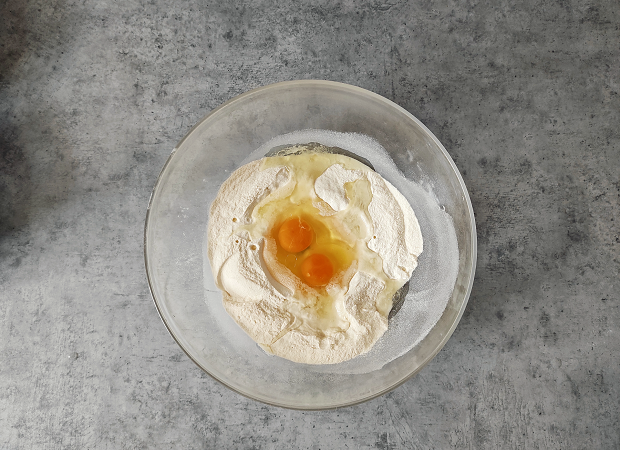


Once you get a firm dough, put it on the floured table and knead it for a couple of minutes.
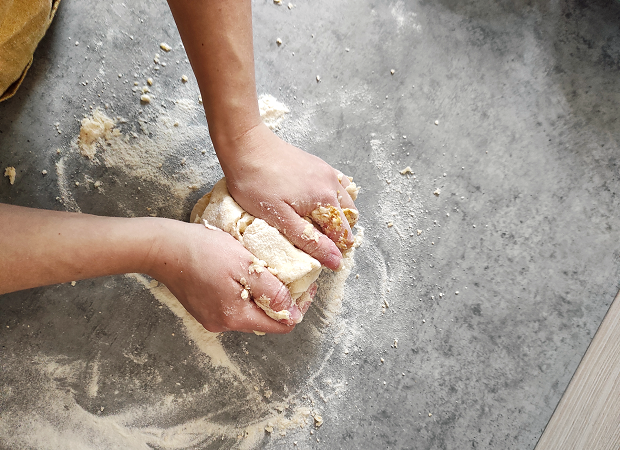


Thinly roll out the dough and cut it into strips and then those strips into squares.
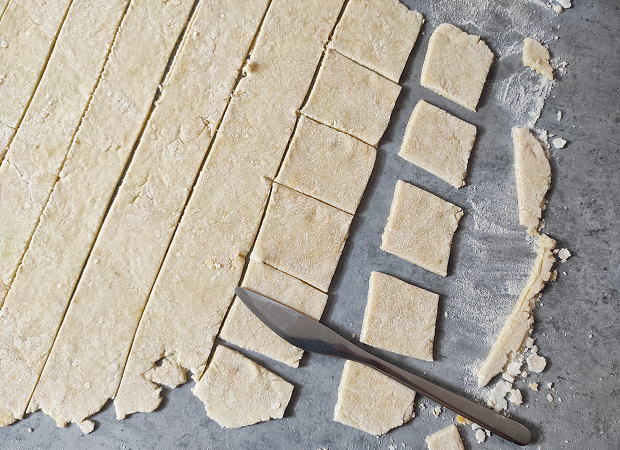


Take one piece of the dough (square) and place the end of a ladle diagonally on its body. Fold the two opposite ends over each other. Press them well. Use a bit of water to connect them better. Repeat this method with all the dough and then leave the pasta to dry for around 15 minutes. Cook fuži in boiling salted water for around 20 minutes.
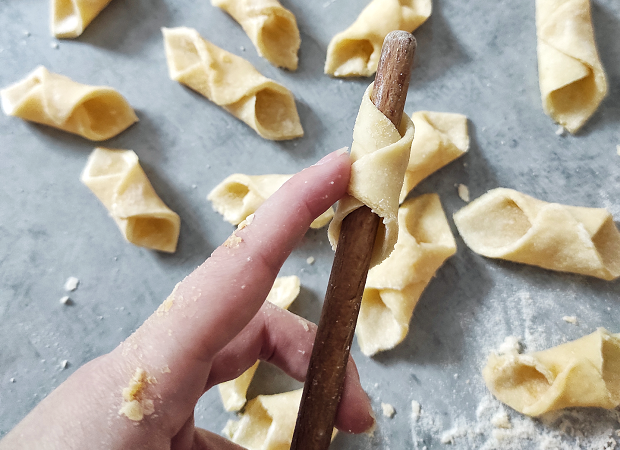


Cut garlic and put it into a baking pan with olive oil and red pepper. Stir and simmer everything for around 2 minutes.
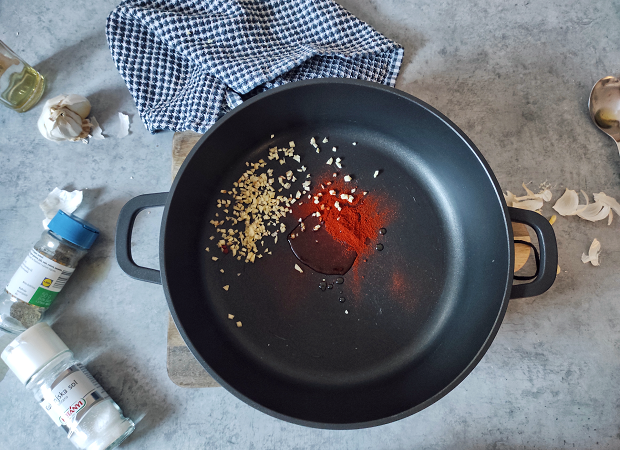


Add tomato juice and rosemary. Cook everything for 30 minutes.
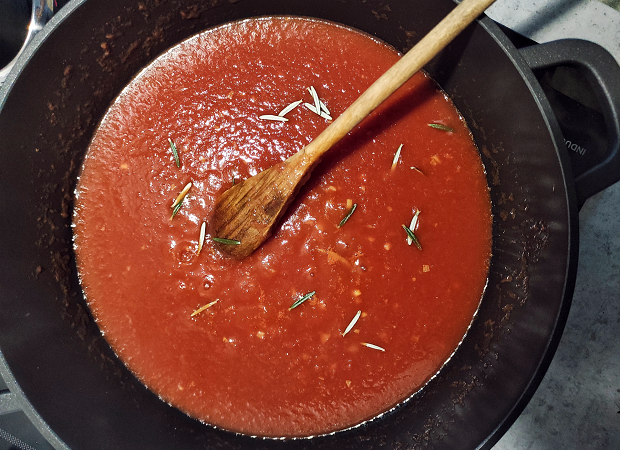


At the end of cooking, add a bit of salt and black pepper into the sauce. Cook everything for a couple of more minutes and then serve fuži with tomato sauce. You can add parmesan if you like.
This dish is excellent to serve with white wine.
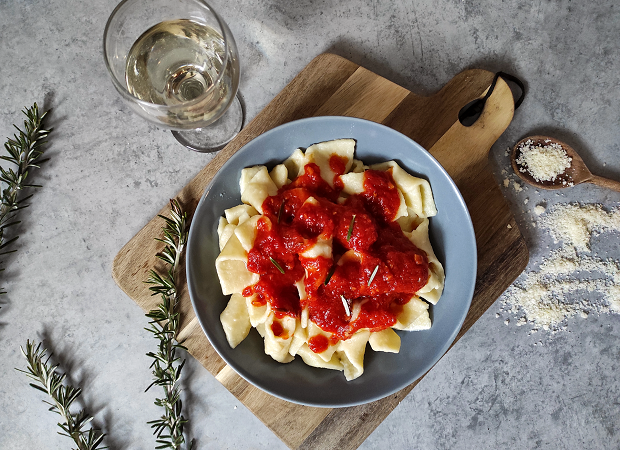


Ingredients
Directions
Put flour in a bigger bowl and make a small hollow in its center, and then add eggs, oil, wine, and a bit of water. Mix all the ingredients.



Once you get a firm dough, put it on the floured table and knead it for a couple of minutes.



Thinly roll out the dough and cut it into strips and then those strips into squares.



Take one piece of the dough (square) and place the end of a ladle diagonally on its body. Fold the two opposite ends over each other. Press them well. Use a bit of water to connect them better. Repeat this method with all the dough and then leave the pasta to dry for around 15 minutes. Cook fuži in boiling salted water for around 20 minutes.



Cut garlic and put it into a baking pan with olive oil and red pepper. Stir and simmer everything for around 2 minutes.



Add tomato juice and rosemary. Cook everything for 30 minutes.



At the end of cooking, add a bit of salt and black pepper into the sauce. Cook everything for a couple of more minutes and then serve fuži with tomato sauce. You can add parmesan if you like.
This dish is excellent to serve with white wine.



Homemade pasta is certainly easy to make – you just need a bit of strength for kneading and rolling, and a bit of patience for shaping. And that’s it!
Despite their attractive look, fuži are simple to make and shape, so don’t be afraid and make your home version of this pasta. Just make sure to thinly roll out the dough. When it comes to the shaping method, I recommend that you use a ladle, it will really ease up the entire process of folding together the two opposite ends. Also – use water to stick those ends!
And that’s it! Those are all the tips and tricks for making this delicious dish! Enjoy and bon appétit!




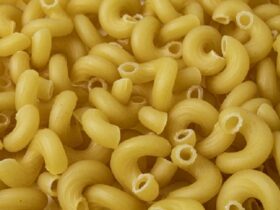
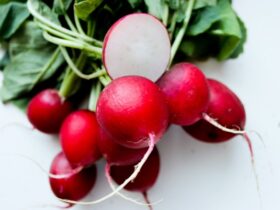






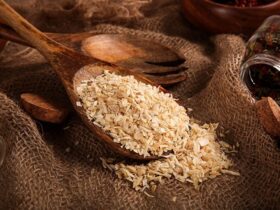
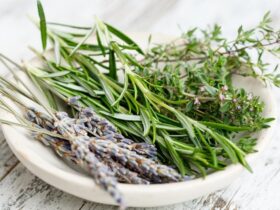
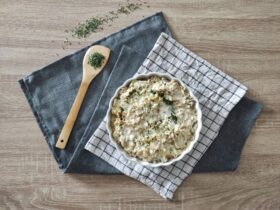



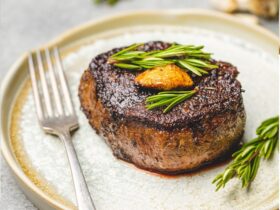
Leave a Reply